 How we process and cook our food may be equally as important as the sourcing of our food, and the nutrition in our food—now more than ever–due to the consistent processing and over-cooking of meat and other foods in the American diet, along with the popularity of paleo and ketogenic diets.
How we process and cook our food may be equally as important as the sourcing of our food, and the nutrition in our food—now more than ever–due to the consistent processing and over-cooking of meat and other foods in the American diet, along with the popularity of paleo and ketogenic diets.
So this begs the question:
How Important is Cooking Food at Lower Temperatures?
We know that cooking foods at higher temperatures destroys nutrients, and cooking foods at lower temperatures preserves nutrients. For example, raw cooking involves cooking foods more slowing, at low temperatures (between 105-118 degrees).
But what about cooking meat?
AGEs:
It has long been known that heavily cooked foods, and foods cooked at high temperatures, inflict massive damage to our genes by generating dangerous byproducts. Certainly you have heard that grilling along with char-boiled meats causes cancer?
This is because cooking foods at high temperatures, and with low moisture, generates the formation of gene-mutating byproducts called AGEs (Advanced Glycation End-Products).
AGEs damage DNA and are associated with high levels of oxidation, inflammation, and diseases such as insulin resistance, kidney disease, diabetes, atherosclerosis, heart disease, obesity, and a variety of cancers.
The higher the level of AGEs generated from a food, the more DNA damage and disease. Conversely, the lower the AGE of a food, the less oxidative stress, less disease, and a longer lifespan as the avoidance of AGEs reduces chronic disease risk.
Grilling, broiling, roasting, searing, and frying accelerate AGEs generation in food. Most “junk” and snack foods are cooked, processed, or preserved at extremely high temperatures, and dry-processed. Because of this process, snack foods have measurably high levels of AGEs as well.
While a safe range of AGE consumption hasn’t been established, it is estimated that the average American consumes AGEs at 15,000 kU/day (1)—and the average American isn’t that healthy, with heart disease, obesity, diabetes, and cancer on the rise—so it is quite possible from my understanding that consuming AGEs at 15,000kU/day is too high since we already see rising disease at this number?
And: the amount of AGE consumption is much higher in those who consume grilled, fried, roasted meats, fats, and highly processed foods at more than 20,000 kU/day (1).
How Food is Prepared Matters
As I mentioned: Dry heat processing promotes AGE formation by more than 10- to 100 times above the AGE of uncooked foods (3), so this includes your dry, packaged goods like snacks: chips, crackers, cookies, etc. that are preserved using dry heat processing.
Also, Grilling is often used by health conscious people, or by restaurants to imply a healthy cooking method, but grilled salmon has the same AGE levels are microwaved cooked salmon.
Risks Associated with AGEs
Those with high insulin, high blood sugar, diabetes, high triglycerides, kidney disease, and who are obese are the groups of people most in need of protection from AGEs. High glucose levels increase glycation reactions, and further increase AGE generation.
AGEs have been linked to prostate, breast, colorectal, esophageal, lung, liver, and other cancers.
A study at the University of Minnesota reported that women who ate overcooked hamburgers had a 50% greater risk of breast cancer than women who ate rare or medium hamburgers. (5)
The famous Iowa Women’s Health Study found that women who consistently eat well-done steak, hamburgers, and bacon have a 4.62-fold increased risk of breast cancer than women who consumed these meats rare or medium done (3).
A Danish study showed that overweight women who ate foods cooked at high temperatures had much higher biological markers of insulin resistance compared with those who ate foods prepared by boiling or steaming (4).
Foods High in AGEs
- Sugary items such as candy, cookies, cakes, soda, and pastries (dry heat processed)
- Processed foods, including packaged meats and cheese, high-fat dairy, homogenized dairy
- High-fat (especially red) meats
- Cooking Fats, including butter, margarine, and oils (coconut oil is the only oil safe for use a high temps)
- Fried foods
Foods Low in AGEs (when prepared properly)
- Fruits and vegetables
- Seafood and other meats–poaching, steaming, stewing, and boiling
- Whole grains
- Vegetarian “burgers”
How to Reduce AGEs, Suggested Guidelines: Changing the way foods are prepared and cooked.
- NEVER USE A MICROWAVE OVEN, even for defrosting.
- Cook your food at 250F degrees, NO HIGHER! Cooking at 250F, you will never need oil or butter.
- As a starting point, allow 12-15 minutes of cooking time per each 4 ounces of food being cooked, but decrease or increase the time if desired.
- Use a glass casserole dish with a cover. (The cover is very important.)
- The tighter the cover fits, the better. The size of the casserole dish should be appropriate for the amount of food being cooked, that is, the casserole dish should not be too big.
- This method of low temperature cooking will conserve more of the naturally occurring moisture of your food, plus, your food will not stick to the cookware.
- Keep food moist while cooking (drying food out creates more AGEs)
- Marinade food, especially meats, in vinegar or lemon (or other acidic marinade) for one hour before cooking limits AGE generating.
- Reduce the intake of AGEs by limiting grilling, broiling, roasting, searing, and frying – all methods generate new AGE formation.
- Use Low AGE–generating cooking methods such as poaching, steaming, stewing, and boiling.
- Consuming lower-heat meals prepared with moist heat (such as soups and stews).
- Avoid deep fried foods, french fries, hamburgers, and potato chips. Limit most snack foods, they are dry-heat processed foods, such as crackers, chips, and cookies.
- Limit high animal fat foods cooked at high temperatures.
- Limit using butter for cooking at high temperatures.
- A diet rich in plant foods could realistically consume half the daily intake of AGEs. Increase the consumption of properly prepared legumes, vegetables, and fruits. Especially cruciferous vegetables such as cabbage, cauliflower, and broccoli.
- Eat raw vegetables, and fruits. When cooking these, keep the temperatures low at 105-118 degrees (raw).
- Buy organic meats, free of genetic modification, antibiotics, hormones, etc. But avoid preparing and cooking these healthy meats grilled, broiled, roasted, char-cooked or burnt. Only prepared them with cooking methods such as poaching, steaming, stewing, and boiling.
Protect Your Genes:
Supplementing with anti-glycation nutrients should be considered if diet changes aren’t made or eating over-cooked foods, processed, packaged, and fried foods are not avoided.
The following nutrients may help neutralize the damaging effects on the DNA caused by AGE (dosing is listed as a courtesy, and only an estimation from the research):
- Carnosine (estimated dose: 1000mg)
2. Benfotiamine (estimated dose: 50 to 500mg)
3. Pyridoxal-5-phosphate (estimated dose: 100mg-200mg)
4. Chlorophyllin (estimated dose: 100mg)
5. Indole-3-carbinol (estimated dose: 80-240 mg)
In summary:
When taking the time to eat organic meats and eat clean, whole foods, make sure you aren’t sabotaging your efforts by cooking your foods at high temperatures.
Cook your foods at the lowest temperature possible. Eat lots of vegetables.
And as always, this blog is not a substitute for consulting your medical provider. The recommended supplements, along with estimated doses, are not recognized or approved by the FDA for treating, curing or otherwise helping the body in any way. See site disclaimer.
Live Life Optimally,
Kristie
Sources:
- Advanced Glycation End Products in Foods and a Practical Guide to Their Reduction in the Diet’J Am Diet Assoc. 2010 Jun; 110(6): 911–16.e12 https://www.ncbi.nlm.nih.gov/pmc/articles/PMC3704564/
- Protection against loss of innate defenses in adulthood by low advanced glycation end products (AGE) intake: role of the antiinflammatory AGE receptor-1.J Clin Endocrinol Metab. 2009 Nov;94(11):4483-91.https://www.ncbi.nlm.nih.gov/pubmed/19820033
- Faloon, William: Live Longer By Changing How You Cook!; Life Extension Magazine 2015 http://www.lifeextension.com/Magazine/2015/CE/CE_Live-Longer-By-Changing-How-You-Cook/Page-01?p=1
- Zanteson, L. Advanced Glycation End Products.Today’s Dietician. 2014 Mar 16 (3): 10. https://authoritynutrition.com/advanced-glycation-end-products/
- Zheng W, Gustafson DR, Sinha R, et al. Well-done meat intake and the risk of breast cancer. J Natl Cancer Inst. 1998 Nov 18;90(22):1724-9.
 Kristie is a wife and mother of 4 and an athlete. She has been working in healthcare for more than 25 years. Kristie’s goal is to assist her patients to achieve and maintain an exceptional level of health and life-balance. She successfully blends prevention, optimization, hormone therapy, and age management with balanced and healthy living into her progressive wellness and integrative medical practice.
Kristie is a wife and mother of 4 and an athlete. She has been working in healthcare for more than 25 years. Kristie’s goal is to assist her patients to achieve and maintain an exceptional level of health and life-balance. She successfully blends prevention, optimization, hormone therapy, and age management with balanced and healthy living into her progressive wellness and integrative medical practice. 












Leave a Reply